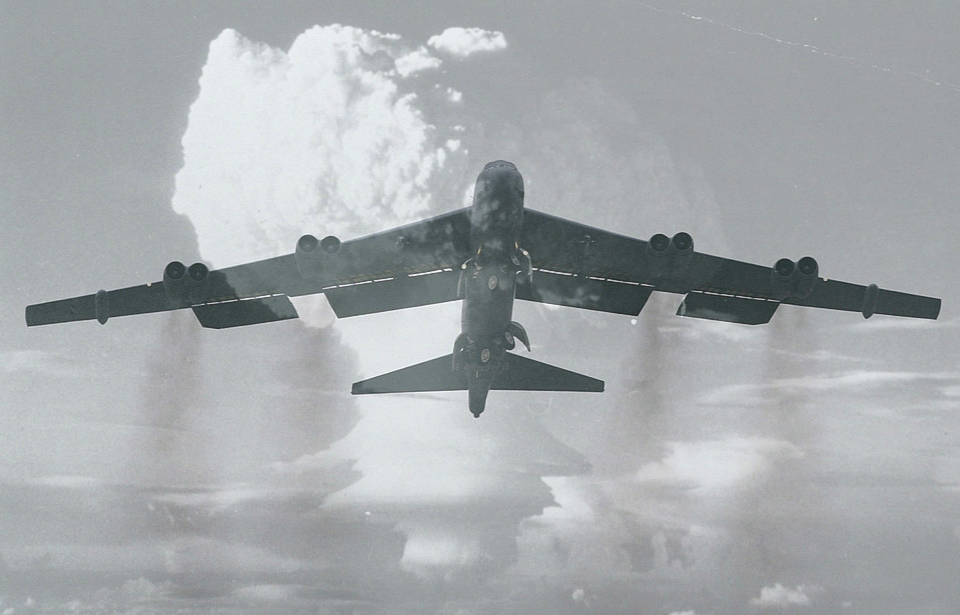It might come as a surprise to some, but the United States came close to nuclear disaster more than once during the Cold War. The most famous incident occurred in North Carolina, when a B-52 Stratofortress crashed, dropping two nuclear bombs. It was only by chance that neither detonated.
This is the story of a similar incident with a B-52. This time, however, the aircraft caught fire while parked at Grand Forks Air Force Base, North Dakota.
The US Air Force downplayed the incident
On September 16, 1980, a B-52H bomber was parked at Grand Forks AFB, prepared to take off in the event of a Soviet nuclear attack. Its six-person crew, assigned to the 319th Bomb Wing, were sitting inside the aircraft when its wing fuel tank caught fire.
Luckily, all members of the crew were able to escape, and firefighters were called to the scene. It took three hours to put the fire out, due to the amount of fuel in the wing tank. When all was said and done, three of the firefighters suffered minor injuries, while another and one member of the bomber’s crew sought treatment for smoke inhalation.
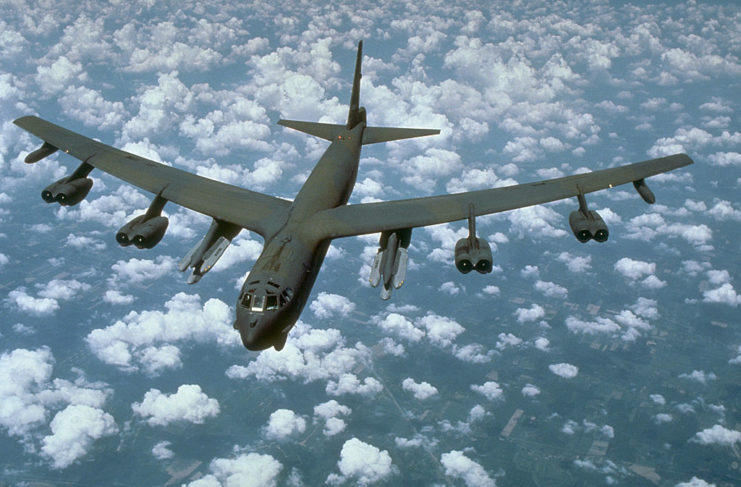
While the fire was blazing, officials at Grand Forks AFB were caught in a catch-22. Air Force policy stated they couldn’t release information regarding if the B-52 had nuclear weapons onboard, but they also couldn’t hide the fire. Additionally, they weren’t sure if they needed to evacuate the base and those living in the surrounding area or sound the emergency broadcast system.
In the end, the decision was made to downplay the incident and tell the public there was no chance of a thermonuclear accident. An investigation after the fact found the fire had been caused by the maintenance crew improperly assembling a fuel strainer, resulting in additional fuel flowing into the number five engine.
The public learns it could have been much worse
Eight years after the fire, a closed hearing of the Senate Appropriations Subcommittee revealed the true extent of the dangers the incident caused. Of note was the fact that the B-52H did, in fact, have thermonuclear weapons onboard: eight nuclear-tipped AGM-69A short-range attack missiles (SRAM) and four B28 nuclear gravity bombs.
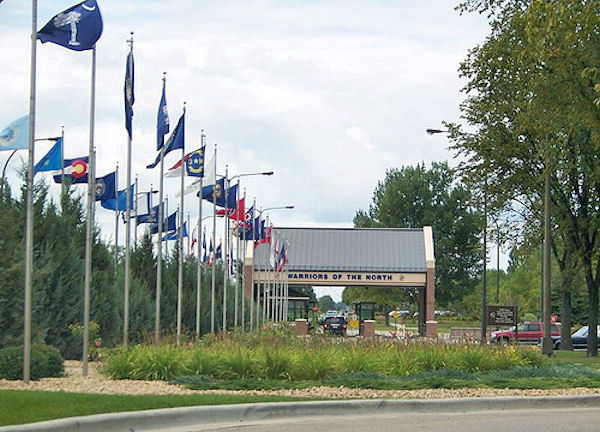
Speaking before the committee, Dr. Roger Batzel, a weapons expert, said the fire could have caused a nuclear incident “possibly worse than Chernobyl.” While the fire wouldn’t have caused the bombs to detonate, it would have exploded the warheads had it spread to the fuselage.
Such an event would have caused the warheads’ plutonium cores to explode into microscopic pieces. If this had occurred, a roughly 60-square-mile area of North Dakota and Minnesota would have been affected, with 75,000 people within 20 miles of Grand Forks AFB experiencing the worst ill effects. There was also the possibility the plutonium could have traveled, via the wind, across the northern US, potentially causing an economic disaster due to reduced agricultural exports.
On top of everything else, it’s likely the soil would have been contaminated for 24,000 years.
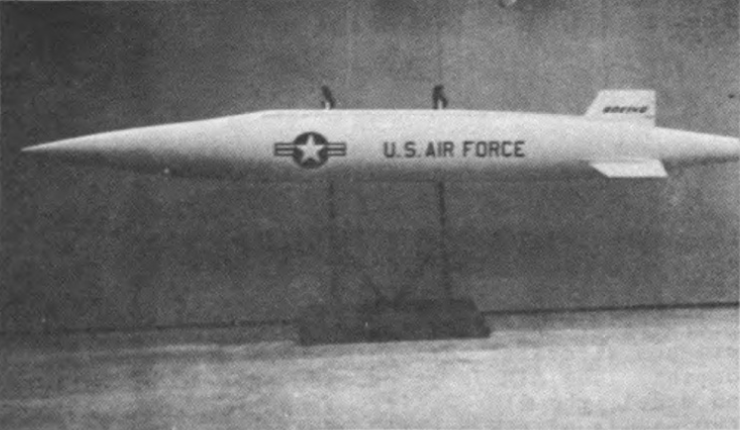
What saved Grand Forks AFB from disaster was the direction of the 26-mile-per-hour wind at the time of the fire. It was blowing away from the fuselage, keeping the blaze away from the bomb bay. Had the B-52H been parked elsewhere or had the wind changed direction, it would have blown the fire toward the missiles, resulting in nuclear disaster.
AGM-69A SRAMs and B28 nuclear gravity bombs
As aforementioned, among the thermonuclear weapons onboard the B-52H was the AGM-69A SRAM. A Boeing-made short-range attack missile, it was developed to penetrate Soviet airspace and neutralize their surface-to-air missile defenses. Approximately 1,500 were produced between 1971-75, and they were typically carried by Rockwell B-1 Lancers, B-52s and General Dynamics F-111 Aardvarks.
Each had a W69 nuclear warhead, with the capability of causing a blast yield of 170 to 200 kilotons of TNT. As a direct result of the incident at Grand Forks AFB, then-Defense Secretary Dick Cheney made it so that AGM-69A SRAMs could no longer be housed in or transported by US aircraft, due to the dangers they posed.
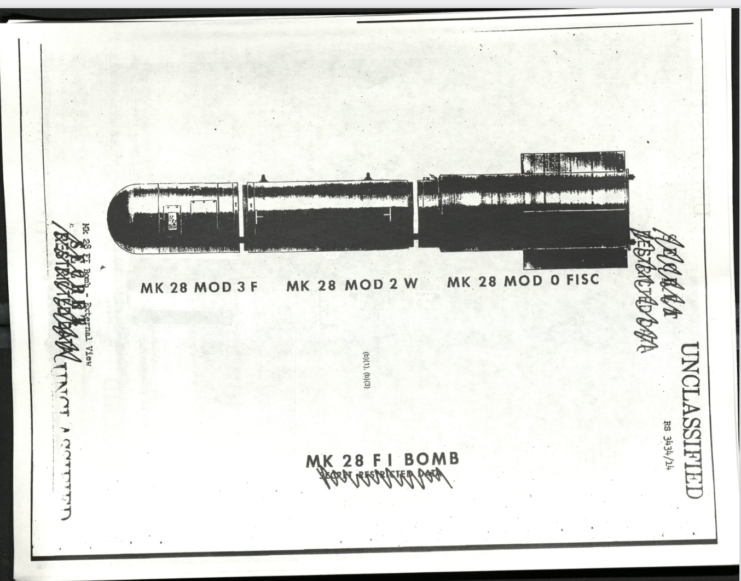
More from us: Jimmy Carter Once Saved Canada From Nuclear Disaster
The B28 gravity nuclear bomb – originally known as the Mark 28 – was a thermonuclear bomb produced in the 1950s-60s. It was carried onboard a host of US aircraft, including bombers, attack aircraft and tactical fighter bombers. Outside of the US, it was used by the Royal Canadian Air Force and the UK’s Royal Air Force.
Over the course of its use, the B28 underwent numerous modifications, resulting in a total of 20 variants being produced. The primary difference between each variant was the safety features and their overall yield.
